 |
 |
 |
| |
Effect of doravirine on body weight and body mass index in treatment na´ve adults with HIV-1
|
| |
| |
Final Results of VICDOR: EffectiVeness of SwItChing to DOR-based Antiretroviral Therapy Under Real-world Conditions in Germany - (10/23/23)
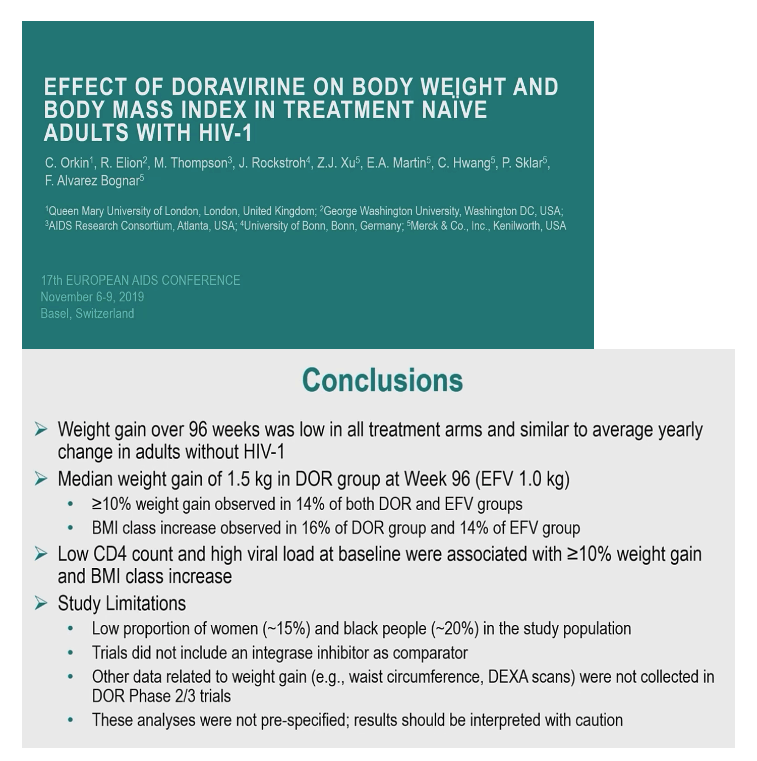
Abstract
Purpose:
Studies suggest integrase strand-transfer inhibitors may cause more weight gain than protease inhibitors and non-nucleoside reverse transcriptase inhibitors in ART-na´ve patients. Female sex, black race, and disease stage have been associated with weight gain in some studies. We compared the effects of doravirine (DOR) on body weight and BMI with those of ritonavir-boosted darunavir (DRV+r) and efavirenz (EFV) using data from the Phase 2 (P007) and Phase 3 trials (DRIVE-FORWARD and DRIVE-AHEAD) in treatment-na´ve adults with HIV-1.
Methods:
Median change in weight was compared using the Wilcoxon rank-sum test, and proportions with ≥5% weight gain were compared using the Mietinnen-Nurminen method. The proportions whose BMI increased (change from underweight/normal to overweight/obese or from overweight to obese) were summarized, and the risk of BMI increase in each treatment group was estimated using a generalized linear model adjusting for region, gender, race, age, and baseline BMI, CD4+ T-cell count, and HIV-1 RNA.
Results:
At 48 and 96 weeks, median weight change was statistically comparable between DOR and DRV+r but higher for DOR than EFV (table). The proportion with ≥5% weight gain was comparable between DOR (26.5%) and DRV+r (23.1%) and higher for DOR than EFV (20.6%) at week 48 but was similar across all groups at week 96. The proportion with BMI increase was not significantly different for each comparison at both timepoints. Baseline CD4+ T-cell count and HIV-1 RNA predicted BMI increase at weeks 48 and 96, while race, age, and treatment group did not; sex predicted BMI increase at week 48 but not at week 96.
Conclusion:
DOR and DRV+r had comparable effects on body weight and BMI. Median weight gain was statistically greater for DOR than EFV at both timepoints, while ≥5% weight gain was greater at 48 weeks only. DOR and EFV had comparable effects on BMI.
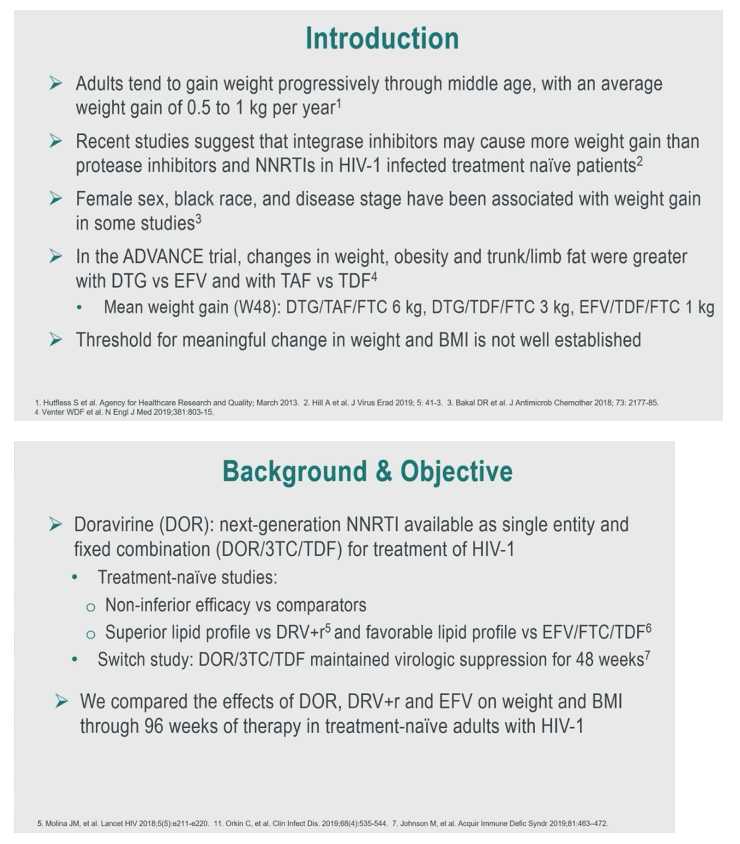
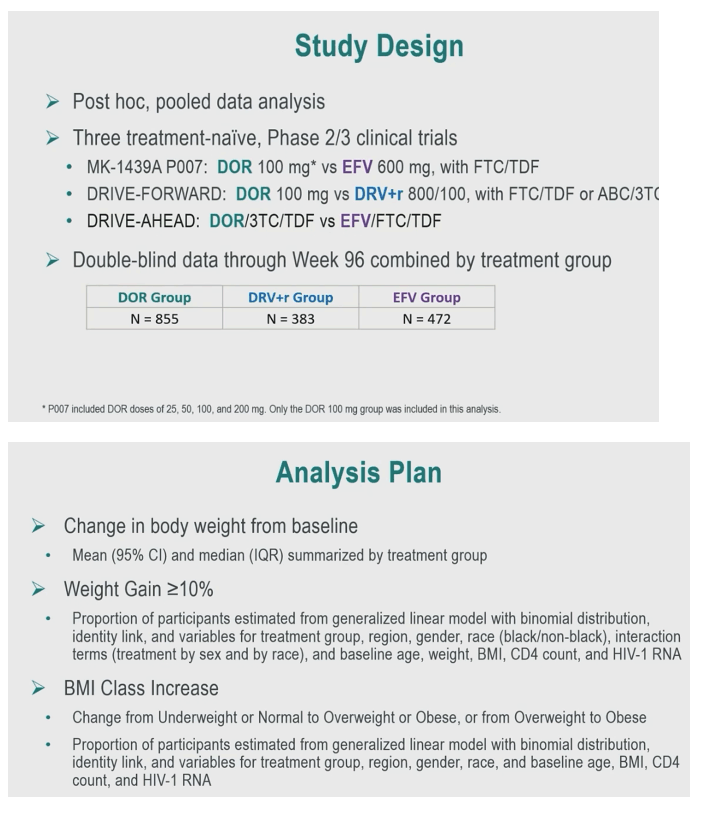
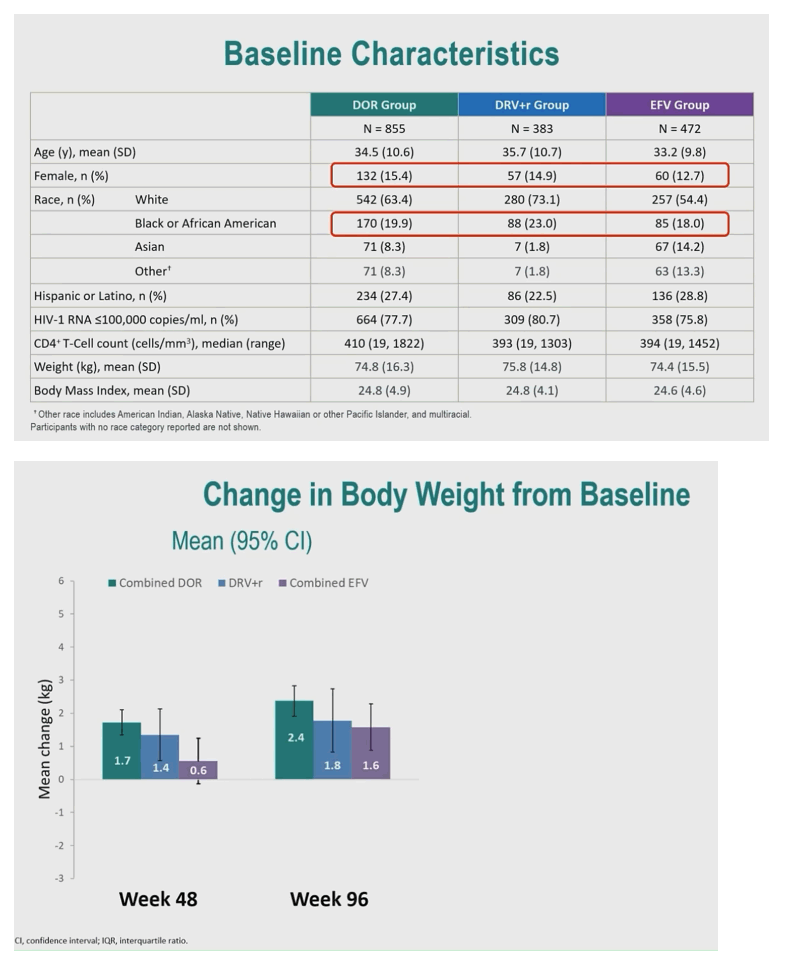
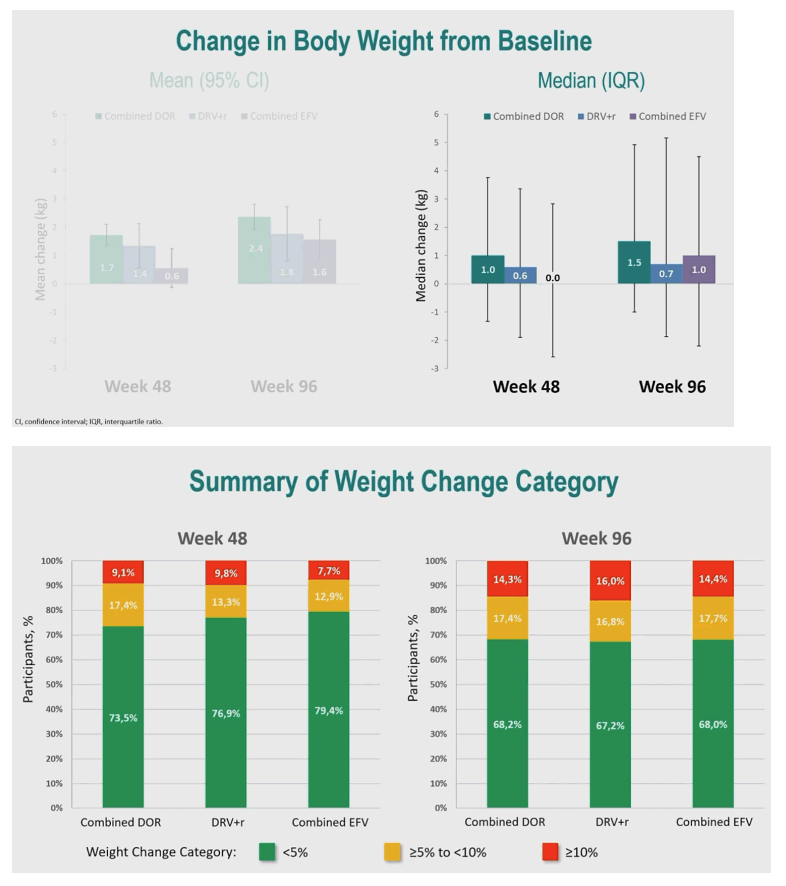
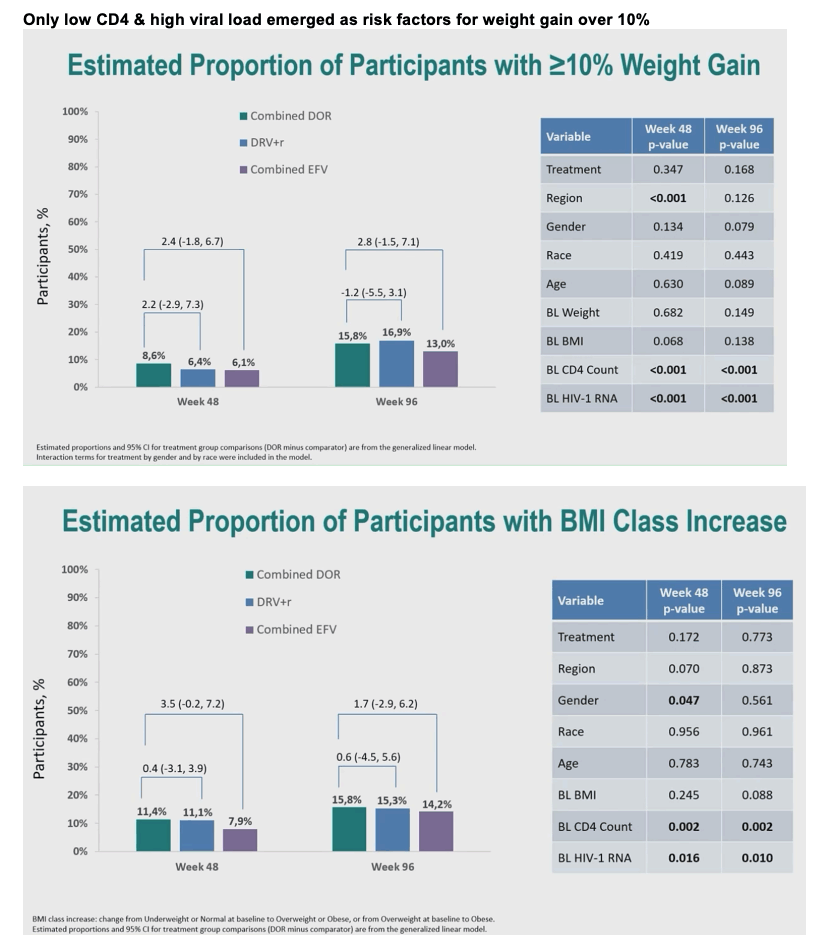
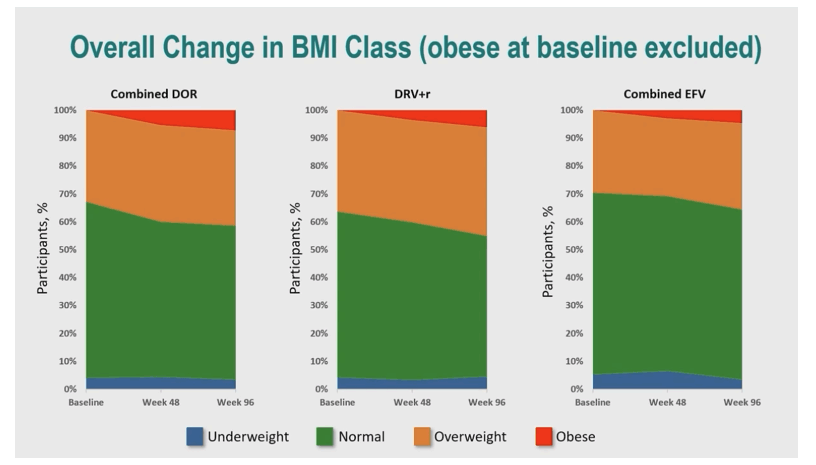
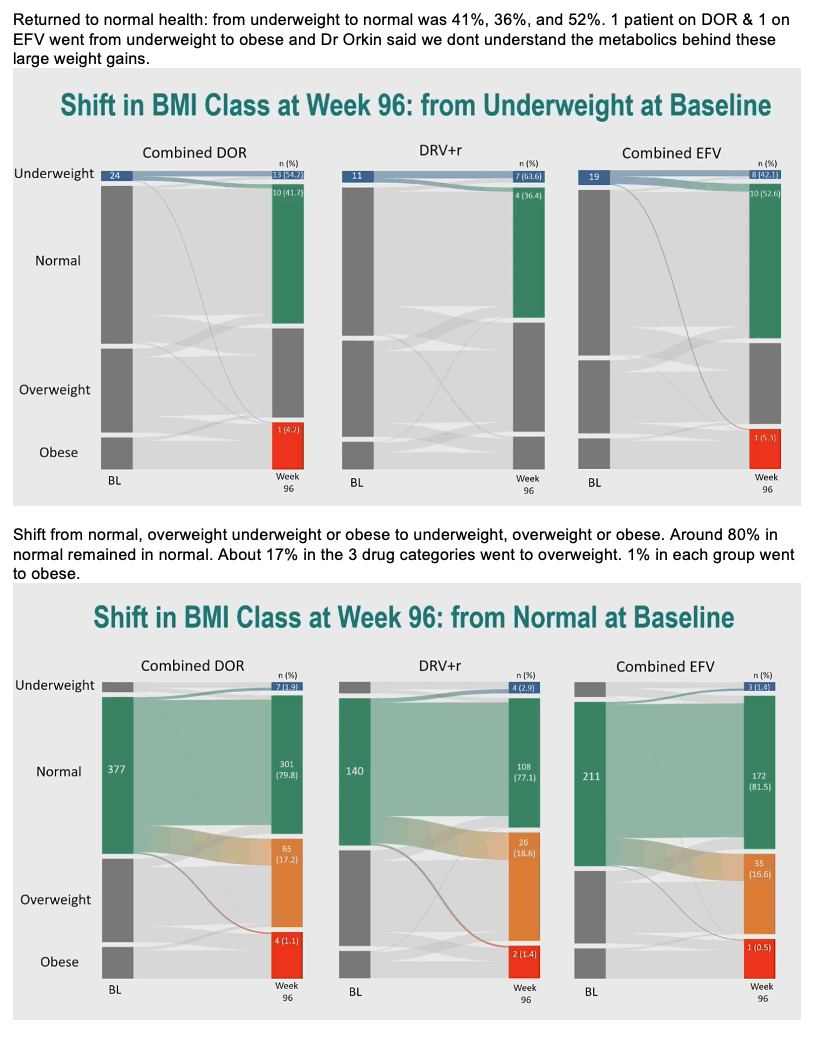

|
| |
|
 |
 |
|
|